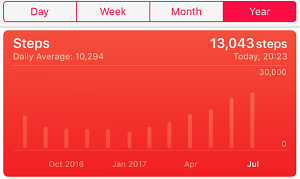Step Count
How Many Steps Should You Take?
Week 10-15: 15K a day
Week 16-20: 20K a day

LISS (Low Intensity Steady State)
- If you have 40-60 minutes to do, have ‘check-point’ times so you know you’re on track with your speed.
- The first time you pick a route, always create a 1-2 minute ‘buffer’ to work against. For example, if you’ve got to do 30 minutes, the first time you do it I’d pick a route that takes you 31-32 minutes to complete. Over time, try to work this down to 30 minutes.
- Once you max a route out, change it and take the same approach. When you come back to that route in a few weeks, aim to beat your previous bests.
- To keep your speed up, think about being late for an important meeting, and the only way you can get there is to walk fast without breaking into a jog.
- If you’re texting or scrolling on your phone, I don’t think you’re going fast enough (very easy to let speed slip when not on a machine).
- You get fresh air and sunlight at the start of the day
- Life can’t get in the way of you getting it done
- You can maximise the use of stubborn fat protocols involving yohimbine and caffeine, which you can read more about here.
- You may give yourself a 1% advantage – find out more here.
HIIT (High Intensity Interval Training)
What If I Have No Time To Do Cardio?
This may be a necessary sacrifice for a few weeks to get where you want to be.
- Focus on your steps. Start finding ways to include extra activity into your daily routine. For example, you can take the stairs instead of the lift, park far away from the shops, start doing more ‘walking meetings’.
- Add finishers to your strength training sessions. 5 to 15 minutes of conditioning in the form of strongman work, interval training and circuits can be brutally effective.
- Go harder on the diet. If you can’t increase energy expenditure much, your best move will be to increase the calorie deficit through diet as much as you can, whilst still being able to recover.
Concluding The Cardio Conundrum
Here’s what you need to focus on to begin with:
- Aim for 10,000 steps a day, everyday
- Add 25-30 minutes of LISS 3 to 7 times a week
- Add 15-20 minute HIIT sessions once or twice a week

.png)
.png)
.png)